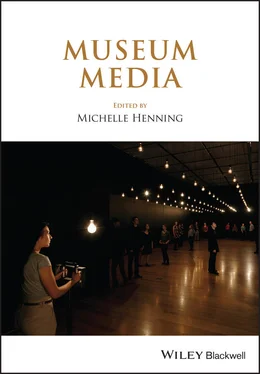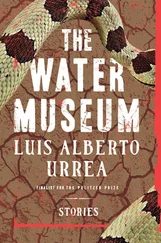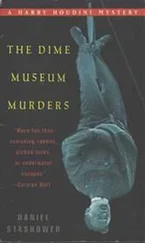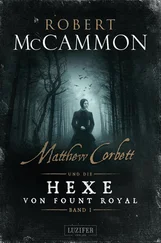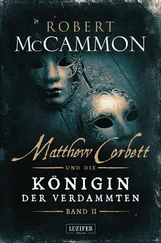Museum Media
Здесь есть возможность читать онлайн «Museum Media» — ознакомительный отрывок электронной книги совершенно бесплатно, а после прочтения отрывка купить полную версию. В некоторых случаях можно слушать аудио, скачать через торрент в формате fb2 и присутствует краткое содержание. Жанр: unrecognised, на английском языке. Описание произведения, (предисловие) а так же отзывы посетителей доступны на портале библиотеки ЛибКат.
- Название:Museum Media
- Автор:
- Жанр:
- Год:неизвестен
- ISBN:нет данных
- Рейтинг книги:4 / 5. Голосов: 1
-
Избранное:Добавить в избранное
- Отзывы:
-
Ваша оценка:
- 80
- 1
- 2
- 3
- 4
- 5
Museum Media: краткое содержание, описание и аннотация
Предлагаем к чтению аннотацию, описание, краткое содержание или предисловие (зависит от того, что написал сам автор книги «Museum Media»). Если вы не нашли необходимую информацию о книге — напишите в комментариях, мы постараемся отыскать её.
Museum Media — читать онлайн ознакомительный отрывок
Ниже представлен текст книги, разбитый по страницам. Система сохранения места последней прочитанной страницы, позволяет с удобством читать онлайн бесплатно книгу «Museum Media», без необходимости каждый раз заново искать на чём Вы остановились. Поставьте закладку, и сможете в любой момент перейти на страницу, на которой закончили чтение.
Интервал:
Закладка:
In the past, museums have been criticized for their irrelevance to the present. In my own chapter, I give the example of a 1920s dispute in which museum director Alexander Dornor advocated facsimiles as a means of bringing museums into “the stream of contemporary life” (Dorner, cited in Chapter 25). The way in which museums construct the past has also come under critical scrutiny: the myth of history as progress is reinforced and naturalized by linear evolutionary arrangements that marshal objects into an “encyclopedic overview” (Habsburg-Lothringen, Chapter 15). The chronological display that invites the visitor to walk through time naturalizes the timeline, creating the sense that this is actually how history unravels (Lubar 2013). Meanwhile, the contemporary art world, now dominated by large private contemporary art galleries, has been characterized as locked in a kind of “presentism” in which fashion and the market rule (Bishop 2013, 12–23). Art historian Claire Bishop suggests that “the permanent collection can be a museum’s greatest weapon in breaking the stasis of presentism,” to create new forms of historical awareness, new ways of mobilizing the past in the present, in displays that go far beyond the chronological (Bishop 2013, 24, 61–62).
In the present volume, several contributors see museums as able to provide alternatives to the historical flattening produced by digital networked media. New approaches in display design, open storage, and collection management can provide counterstrategies to a dominant understanding of history (Ernst, Chapter 1). Some museums seem to fully embrace the new digital immediacy, opening themselves up to the onslaught of images in a new, networked culture. Others try to reveal the discontinuities and gaps in both traditional narratives of smooth progress and the contemporary sense of complete and simultaneous availability of history (Hoskins and Holdsworth, Chapter 2). This is not so far removed from the aims of 1980s museum designers and curators such as Gottfried Korff. Bettina Habsburg-Lothringen, head of the Museumsakademie Joanneum in Graz, writes in Chapter 15of the ways Korff wanted to challenge the sense of an accessible, unmediated historical past that folk museum reconstructions and period rooms seemed to promote.
Arguably, these changes in the cultural relationship to the past began as early as the mid-nineteenth century when photographic, telegraphic, and phonographic media made it possible to see and hear the faces and voices of the dead. As writers such as John Durham Peters have shown, this was especially poignant in wartime and in an era of high child mortality (Peters 1999). In 1936 Walter Benjamin wrote about an increasing inability in the modern period to make experiences – the things that happen to us – into experience, in the sense of a deeply embedded and practical understanding. He connected this to media via the example of the newspaper, with its fragmented and disconnected articles, but also more widely to modernity, an era of rapid and accelerating social and technological change in which an onslaught of stimuli combines with the absence of any stable, unchanging position from which to view the world (Benjamin [1936] 2002, 146). Swiss curator Beat Hächler, in Chapter 16, considers this decay of experience as offering a new remit to museums to transform themselves into spaces that enable people to experience and reflect on their collective present.
One way in which stable and coherent historical accounts have traditionally been ensured is via a strict separation between individual memory (understood as unreliable, narrowly specific, and subjective) and official history (underpinned by documentary evidence and the authority of academic expertise and research). In Chapter 4, Steffi de Jong argues that the video testimonies now commonly used in historical museums overturn this old hierarchy of historical transmission and memory. Personal, individual memory is now an acceptable part of the historical narrative and a museum object. Indeed, the medium of video has been a key tool in prioritizing individual memory and personal experience. In the 1980s video enabled home movies to move out of the living room and innovative television makers used the video camcorder to make first-person experiences a part of broadcast television through genres such as “video diaries” (Rose 1994–95; Dovey [1995] 2004). De Jong sees the rise of video testimonies as symptomatic of the “era of the witness” (Wieviorka 2006). In this context, remembering is not simply a matter of reporting but of bearing witness, giving testimony. The media coverage of the 1961 trial of Adolf Eichmann, one of the first televised trials, boosted the visibility of the witness to history. Television enabled testimony to be made public; video enabled it to be gathered and stored en masse.
Mediazation and transmediation
De Jong’s account shows how video testimonies have developed a specific aesthetic: framing, location, and lighting prioritize emotional, extra-verbal expression and create the impression of direct eye contact between interviewee and viewer, an illusion of conversational directness. At the same time, these aesthetic conventions reinforce the museum’s traditional role: to transmit historical information and moral messages, to produce a self-disciplining form of citizenship (Bennett 1995; de Jong, Chapter 4). Video testimony is a powerful tool for this purpose, because it is affective (communicating feeling via facial expression and nonverbal signals) yet its aesthetic and methodology imply objectivity, neutrality, and a documentary status.
The potential of media to bring new kinds of authority and new forms of audience address make them attractive to museums and galleries, which not only incorporate different media in their exhibition spaces, but frequently invoke or engage with other media by adapting and quoting media genres and formats. One issue discussed in Chapter 1is how museums tend to mirror the media of their time, emulating cinema, for example, through displays such as the period room or the diorama. In fact, it is hard to imagine a museum remaining unchanged by media: my own chapter (25) relates how photography has dramatically altered the ways in which museum visitors see and understand art, so that the art museum, without even rehanging its collections, is subjected to altered modes of attention. Haidee Wasson’s chapter shows that American museums became closely involved with media as technologies and institutions from a very early date: museums’ “early experiments with television” began almost as soon as television was launched at the 1939 New York World’s Fair (Wasson, Chapter 26).
Sometimes museums and exhibitions explicitly use media formats in order to comment critically on them or to reflect on the museum as institution. For instance, in her chapter in Part I, Maeve Connolly discusses how contemporary art exhibitions that explore television as a cultural form have used design techniques to evoke television studios and the living room as a television viewing space. Design elements such as the choice of monitor, seating, and lighting have been used to evoke different relationships to television, the social and pedagogic role of the medium, and TV’s changing status. TV formats are also used to reflect on the art institution and art market itself, from the use of reality TV references and modes, to close collaborations with broadcasters (Connolly, Chapter 6).
Elsewhere, museums’ attempts to embrace contemporary media are not intended to produce commentary or reflection on either institution, but rather to reinvent the museum as medium. In Chapter 3, Nils Lindahl Elliot describes Wildwalk in Bristol, UK (a futuristic attraction that closed only seven years after opening), as an attempt to “transmediate” the wildlife documentary in the form of a museum/zoo. Zoos had already attempted to transmediate wildlife television – giving visitors the sense that they were visiting animals in their habitats – and attempting to make the whole experience more cinematic. Using C. S. Peirce’s semeiotics (as distinguished from the more familiar post-Saussurean “semiotics”), Lindahl Elliot shows the complex and contradictory character of transmediation and “mediazation” (Thompson 1990, 11). He concludes that while transmediation can happen between museums and media genres, the effects can be unforeseen and problematic, producing inadvertent pedagogic effects.
Читать дальшеИнтервал:
Закладка:
Похожие книги на «Museum Media»
Представляем Вашему вниманию похожие книги на «Museum Media» списком для выбора. Мы отобрали схожую по названию и смыслу литературу в надежде предоставить читателям больше вариантов отыскать новые, интересные, ещё непрочитанные произведения.
Обсуждение, отзывы о книге «Museum Media» и просто собственные мнения читателей. Оставьте ваши комментарии, напишите, что Вы думаете о произведении, его смысле или главных героях. Укажите что конкретно понравилось, а что нет, и почему Вы так считаете.
